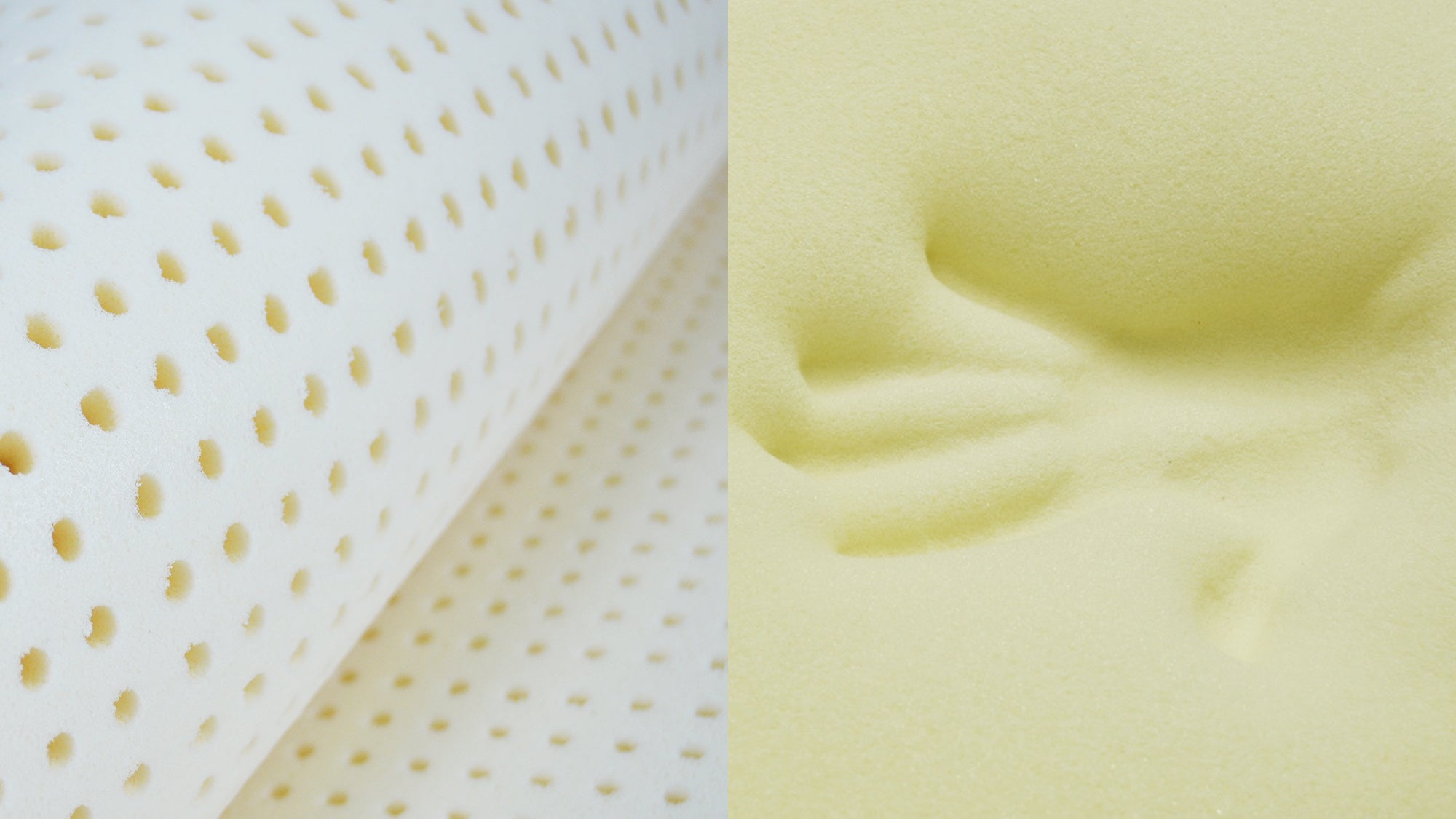Are you debating between a natural latex and a memory foam (viscoelastic) mattress? They both excel at comfort, and each has their own set of pros and cons. However, latex comes out as the better option of the two. Find out why here.
What are they made of?
A natural latex mattress is made out of the sap of the rubber tree. This milky liquid sap (the latex) is processed into blocks of springy comfortable foam. A latex mattress is therefore a natural product. An all-natural latex mattress will not contain harsh chemicals and is naturally dust mite resistant and mould resistant.
Memory foam, or viscoelastic foam, is made primarily from polyurethane. Other chemicals are added to it to increase its density and viscosity. Memory foam is therefore an entirely synthetic product. Memory foam first had widespread use in aircraft cushions for safety, and in medical settings to avoid pressure points.
What is the user experience of a latex mattress versus a memory foam mattress?
We'll find out more about the specific pros and cons of each of these mattresses, but first let's take a look at how each type of mattress would actually feel.
When you lie down on a latex mattress, you'll initially feel a sort of a pleasant 'sinking' feeling, followed by a feeling of soft supportiveness. This is why so many people enjoy latex mattresses: the superb comfort. In fact, many people suffering from chronic pain (e.g. back pain and scoliosis) find that a latex mattress alleviates the pain.
When you lie down on a memory foam mattress, it feels very comfortable by letting your body form an impression (it springs back, or 'recovers' after you move away). Memory foam conforms to your body contours. Beware that if you roll over, you will find that it takes more energy to move, due to the viscosity of the memory foam. You'll also notice that memory foam feels warm to your body, because of the temperature sensitivity of memory foam. Those in cool climates may enjoy this, but in Singapore a memory foam mattress can feel unpleasantly hot.
Advantages and disadvantages of a natural latex mattress

Advantages
- Extremely comfortable - a latex mattress offers a soft yet supportive sleeping experience, able to alleviate pain. Latex mattresses have a very high owner satisfaction rating due to their restful comfort.
- Good body pressure support means that the spine will be lined up correctly while sleeping. The body pressure distribution properties of latex mattresses prevent pressure points on the body.
- Latex is a natural product - no exposure to harsh chemicals.
- Naturally mould resistant and dust mite resistant without use of added chemicals, unlike other mattresses.
- Excellent air circulation - the natural open-cell structure of latex allows air to circulate. In addition, latex mattresses are constructed with pin-holes in them which improve the air circulation even further.
- Durability - a latex mattress is one of the most durable types of mattresses. It keeps its comfort and softness without sagging for a very long time, beyond that of other mattress types.
Disadvantages
- Expense - an all-natural latex mattress is relatively expensive compared to other mattresses, although not in comparison to memory foam.
Advantages and disadvantages of a memory foam mattress

Advantages
- Very comfortable - many people enjoy the sensation of sleeping on a memory foam mattress.
- Does not transmit movement easily - movement on one side of the bed does not affect the other side. Memory foam excels at this property above and beyond other mattresses.
Disadvantages
- Feels hot when sleeping - this property is due to the heat sensitivity of memory foam. Many people in warm climates such as Singapore find a memory foam mattress unpleasantly warm to sleep on.
- Off-gassing - this is an unpleasant chemical odour which is emitted by many memory foam mattresses, especially when new. Not only does off-gassing smell nasty, but health-wise you might be concerned about breathing in these chemicals when sleeping.
- Takes more energy to roll over - when you roll over or move on a memory foam mattress, it takes up more of your energy to do so. This is because of the high viscosity of memory foam. Therefore, those who move a lot in bed may find this interrupts their sleep more than it would on another type of mattress.
- Poor air circulation - air does not circulate easily in a memory foam mattress, making it less well suited for warm humid climates such as those found in Singapore.
- Not so durable - eventually the memory foam loses its ability to 'spring back'. The heavier the person is, the faster a memory foam mattress will break down.
- Expense - a memory foam mattress is more expensive than most other types of mattresses.
Natural latex mattress versus memory foam: the verdict
Latex and memory foam both excel at delivering restful comfort. However, latex comes out as the better option overall because it offers a lot of additional advantages, such as mould resistance, excellent airflow, and high durability.
Memory foam has a lot of disadvantages which all too often shoppers are not aware of until after they have purchased one. Some of these are smelly off-gassing and an unpleasantly hot sensation while sleeping, and these can actually interfere with your sleep.
Overall, a natural latex mattress is better than a memory foam because latex has a lot more advantages, and less disadvantages, than memory foam. Memory foam is somewhat over-hyped. It is widely touted as being comfortable - and it certainly is - but many shoppers are simply unaware that memory foam comes with some significant disadvantages. In contrast, latex mattresses have a lot of advantages without significant disadvantages.
If you're thinking of shopping for a latex mattress, try one out and enjoy! You'll see first-hand why they are in high demand worldwide.














